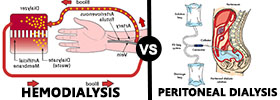Difference between Blood and Lymph
Key Difference: The blood, which is part of the circulatory system, is a bodily fluid that is allows the circulation of oxygen throughout the body. Lymph is a colorless fluid that is part of the lymphatic system that helps facilitate fighting of infections and removal of waste products.

The human body is very complex. It is made up of a variety of different systems including organs, muscles, the circulatory system, the lymphatic system, and so many more. Two of the many things that make the body works as it does, is the blood and the lymph.
The blood, which is part of the circulatory system, is a bodily fluid that is allows the circulation of oxygen throughout the body. Blood also facilitates the movement of nutrients, as well as oxygen to various parts of the body, in addition to removal of metabolic waste products from those cells. Blood also plays a major part in regulating temperature, pH balance, and water balance.
An average human being has about 5 liters of blood, which accounts for roughly 7% of the human body weight. The blood is made of three main things: blood cells, which float around in blood plasma, white blood cells that fight infections and heal wounds, and blood platelets that help the blood to clot. The blood is created in the bone marrow, which is the inner soft part of the bone.
 The lymphatic system is a system similar to the circulatory system. The lymphatic system is a system of thin vessels that are connected to the tissues in the body. This system is part of the immune system. Lymph is a fluid that flows through the lymphatic system.
The lymphatic system is a system similar to the circulatory system. The lymphatic system is a system of thin vessels that are connected to the tissues in the body. This system is part of the immune system. Lymph is a fluid that flows through the lymphatic system.
Lymph is a colorless fluid, as it lacks the red blood cells that give blood its red color. The lymph instead contains white blood cells and lymphocytes, both of which play a major part in fighting off infections. In addition to the transportation of the white blood cells and lymphocytes, the lymph helps facilitate a variety of other functions, such as the removal of foreign matter, waste products, and cell debris from the tissues to the blood system. The blood system then disposes of the said foreign matter, waste products, and cell debris. The lymph also helps transport fats and fat soluble vitamins from the small intestine to the blood.
Lymph is basically part of the interstitial fluid which is produced by the tissues. The interstitial fluid contains plasmatic, lymphatic, intraocular, synovial, pericardial, intrapleural, peritoneal, and digestive fluids. As part of the interstitial fluid, the lymph collects the waste products, and/or fat from the tissues, then travels through the lymphatic system, and eventually joins with the blood in the circulatory system.
Comparison between Blood and Lymph:
|
|
Blood |
Lymph |
|
Description |
Blood is a reddish fluid that is part of the circulatory system that helps transport oxygen and nutrients to the cells and the removal of waste from those cells. |
Lymph is a colorless fluid that is part of the lymphatic system that helps facilitate fighting of infections and removal of waste products. |
|
Part of |
The circulatory system |
The lymphatic system, which is part of the immune system. |
|
Made up of |
Red blood cells White blood cells Blood platelets All floating in blood plasma |
White blood cells Floating in a colorless, watery fluid |
|
Color |
Red, due to presence of red blood cells. |
Colorless, due to lack of red blood cells. Might appear milky white. |
|
Function |
|
|
|
Proteins |
It contains diffusible and non-diffusible proteins like albumin, globulin and fibrinogen. |
It contains diffusible proteins. |
|
Clotting |
It can clot due to presence of more amount of fibrinogen. |
It clots slowly due to presence of less fibrinogen. |
|
Flow |
Two way: to the heart, from the heart |
One way: to the blood system. |
Image Courtesy: biomolecularchemistry.nl, courses.washington.edu









Add new comment